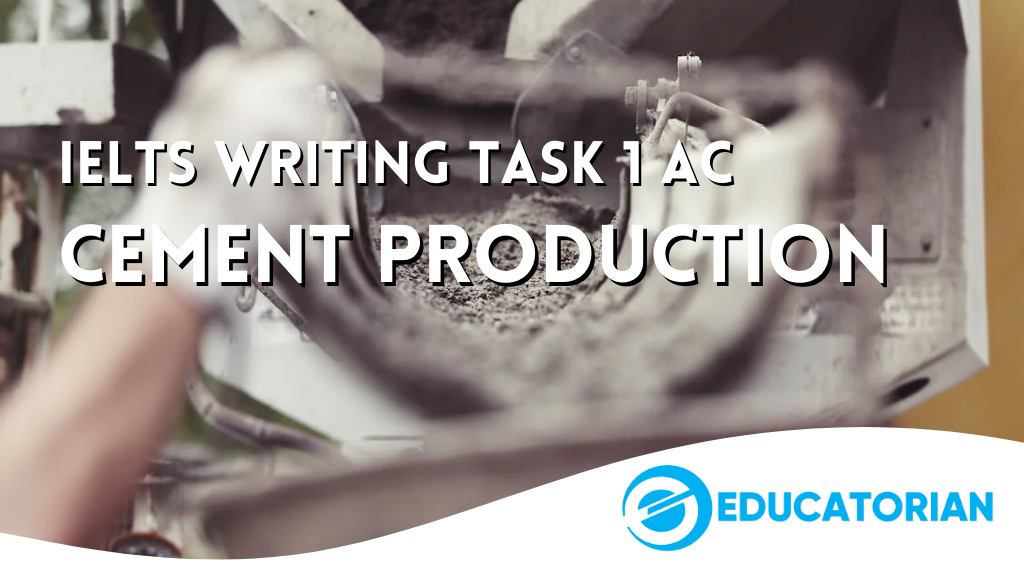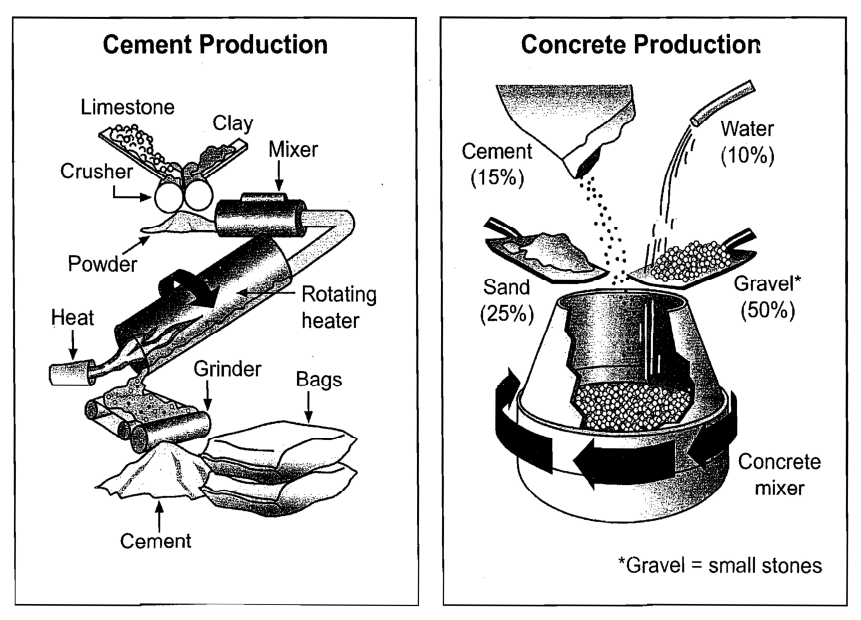
IELTS Academic Writing Task 1: Cement Production
IELTS WRITING TASK 1 – Academic
You should spend about 20 minutes on this task.
The diagrams below show the stages and equipment used in the cement-making process, and how cement is used to produce concrete for building purposes.
Summarise the information by selecting and reporting the main features, and make comparisons where relevant.

Write at least 150 words.
Data Type: Diagram
Time: Since there is no time, it is by default (Present Simple)
Vocabulary –
- Stages
- Equipment – Machinery
Version 1
- Introduction + Overview
- Cement Production
- Concrete Production
The first diagram depicts the production of cement using various materials and machinery, while the second illustrates the production of concrete. Overall, while cement requires five major steps, concrete can be produced with two major processes.
To make a batch of cement, a combination of two-thirds limestone and one-third clay is fed into a crusher that pulverizes the minerals into granules. The resulting powder is then mixed in a mixer and heated using a rotating heater, with the heat source located below the pipeline. The mixed and heated minerals are ground into a finer powder to produce cement, which is then packaged in bags.
To produce concrete, one-fifteenth of cement, a tenth of water, and a quarter of sand are mixed with half gravel, which is essentially small stones, in a concrete mixer. The mixture is thoroughly mixed to create concrete, which can be used in a wide range of construction applications.
Version 2
The two diagrams explain the production of cement and concrete. Overall, cement makes use of various materials and specialized machinery while a rather straightforward and minimalist two-step procedure for creating concrete.
Cement production requires five distinct stages, each of which demands a significant amount of energy and resources. The first step involves crushing a combination of two-thirds limestone and one-third clay in a powerful crusher. The resulting granular mixture is then fed into a mixer, where it is heated with the aid of a rotating heater positioned below a pipeline. Once properly heated, the minerals are ground into a fine powder, yielding the vital building material known as cement, which is subsequently packaged in durable bags for transportation and storage.
On the other hand, concrete can be generated through a significantly simpler procedure, necessitating only two essential stages. First, one-fifteenth of cement, a tenth of water, and a quarter of sand are carefully blended together, after which half gravel, composed of small stones, is added to the mixture. The resulting mixture is then extensively mixed in a concrete mixer to create a durable and versatile material that finds widespread application in a range of construction projects, from buildings to roads and bridges.
Check my other IELTS Writing.
Check my website.

Ian Tanpiuco is an ESL and virtual assistant. With a decade of experience, he has become an expert in his field. Dedicated to helping others achieve their goals, Ian works tirelessly in the classroom or as a virtual assistant.

